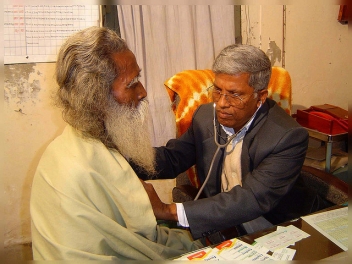 “The intention to screen is the intention to treat.” The most important statement of most tuberculosis (TB) control strategies!
“The intention to screen is the intention to treat.” The most important statement of most tuberculosis (TB) control strategies!
Of all population groups, the above statement is most relevant to older people. As the TB epidemic grows, the issues and gaps related to screening and treatment for older people become more obvious.
Older people are a high risk group for TB. Why?
Because of the way the disease presents itself is not always easy to spot. Reports suggest that only up to 35% of people with TB have respiratory symptoms. And often they live with other conditions that may mask the disease.
Older people are more likely to be under-diagnosed and are more likely to die unscreened and untreated. They are also more likely to acquire the active form of infection from a latent form acquired years or decades ago.
The factors that put older people at such high risk are tobacco use, low socio-economic status, previous disease, longer delays in seeking medical attention and very high rates of adverse reactions during treatment. An estimated 16% die without being cured.
Dealing with TB and other illnesses
A further challenge is the other health problems that older people lives with in addition to TB. Chronic Obstructive Pulmonary Disease (COPD) is now projected as one of the largest killers and there are higher prevalence rates among older people – often in co-existence with TB. The link between HIV and TB and older people is now understood and is being researched further.
The issues related to nutrition and metabolism also increase vulnerability. There is sound evidence of a strong relationship between diabetes and TB in older people. Similarly, the prevalence is much higher in people who are malnourished. Large numbers of older people live in impoverished settings and are prone to malnourishment.
The WHO has been working on the International Standards of Tuberculosis Care (ISTC). The focus is on looking at TB control approaches in remote and resource-limited settings. Realising the magnitude of global TB burden, the WHO and other agencies working to control TB understand that the medical fraternity needs active support from other parts of the community, government, NGOs, etc…
Older people excluded from TB control
Amidst these, the reality is that older people continue to be excluded from TB control strategies. Lack of screening or late screening, followed by limited treatment choices characterise the scene.
Early screening and early initiation of treatment is essential among older people. Beyond that, nutritional management is also a key component.
A healthy life style would complement treatment with greater impact. And to propagate that, partnerships between organisations and agencies working on health issues will have a key role to play.
The intention to screen is the intention to treat – This needs to reflect strongly in TB control programmes aimed at older populations.
Read more about our work on health and non communicable diseases
